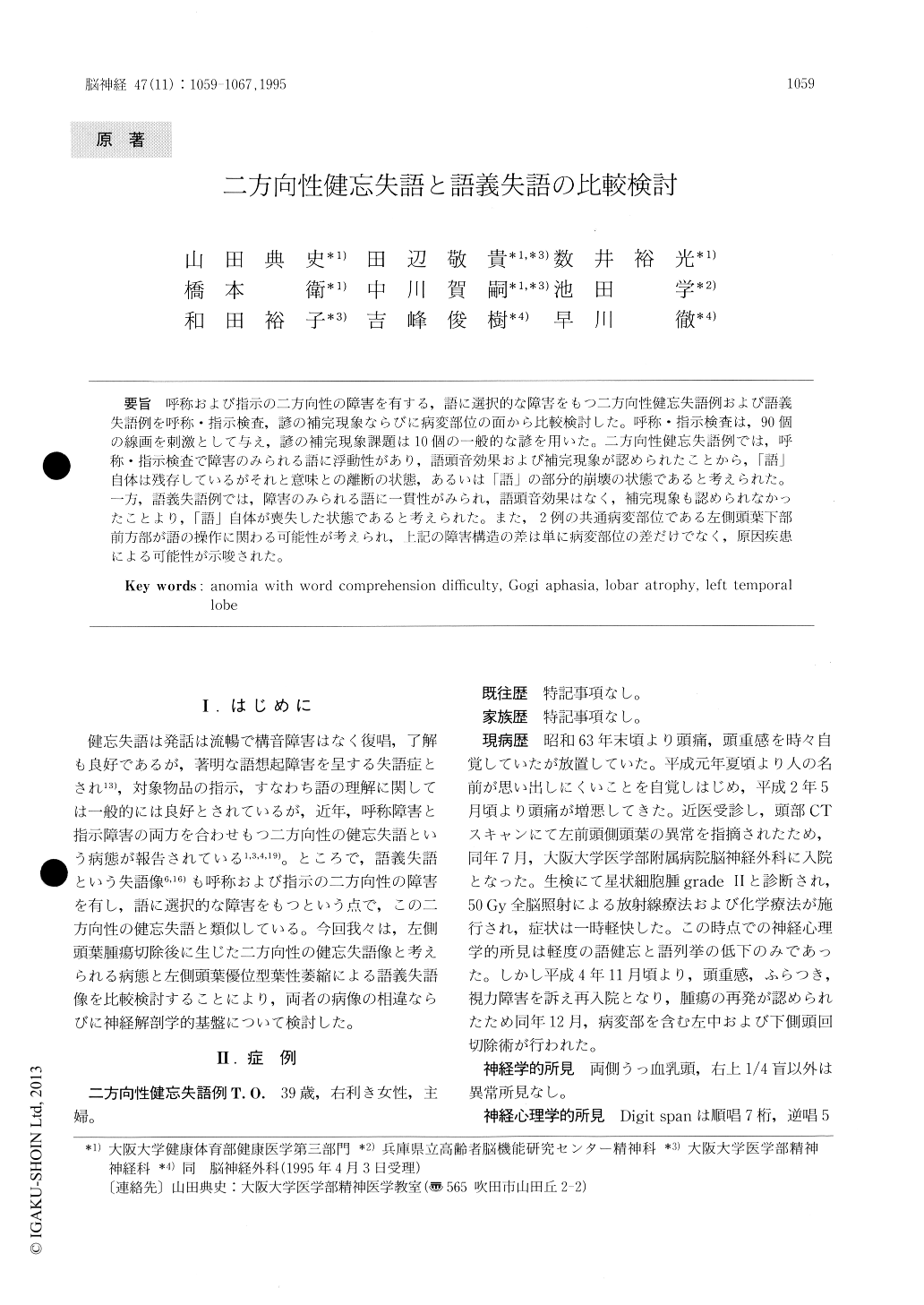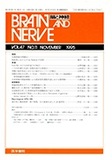Japanese
English
- 有料閲覧
- Abstract 文献概要
- 1ページ目 Look Inside
呼称および指示の二方向性の障害を有する,語に選択的な障害をもつ二方向性健忘失語例および語義失語例を呼称・指示検査,諺の補完現象ならびに病変部位の面から比較検討した。呼称・指示検査は,90個の線画を刺激として与え,諺の補完現象課題は10個の一般的な諺を用いた。二方向性健忘失語例では,呼称・指示検査で障害のみられる語に浮動性があり,語頭音効果および補完現象が認められたことから,「語」自体は残存しているがそれと意味との離断の状態,あるいは「語」の部分的崩壊の状態であると考えられた。一方,語義失語例では,障害のみられる語に一貫性がみられ,語頭音効果はなく,補完現象も認められなかったことより,「語」自体が喪失した状態であると考えられた。また,2例の共通病変部位である左側頭葉下部前方部が語の操作に関わる可能性が考えられ,上記の障害構造の差は単に病変部位の差だけでなく,原因疾患による可能性が示唆された。
We used naming and pointing tests and a proverb completion task to compare two cases of aphasia that exhibited a selective disturbance of word processing. One patient had anomia with word comprehension difficulty due to partial ablation of the left temporal lobe and the other patient had Gogi aphasia due to lobar atrophy with left tempo-ral predominance. We presented 90 pictures of common objects divided into 9 categories in the naming and pointing tests, and used 10 well-known Japanese proverbs as stimuli in the proverb comple-tion task.

Copyright © 1995, Igaku-Shoin Ltd. All rights reserved.


